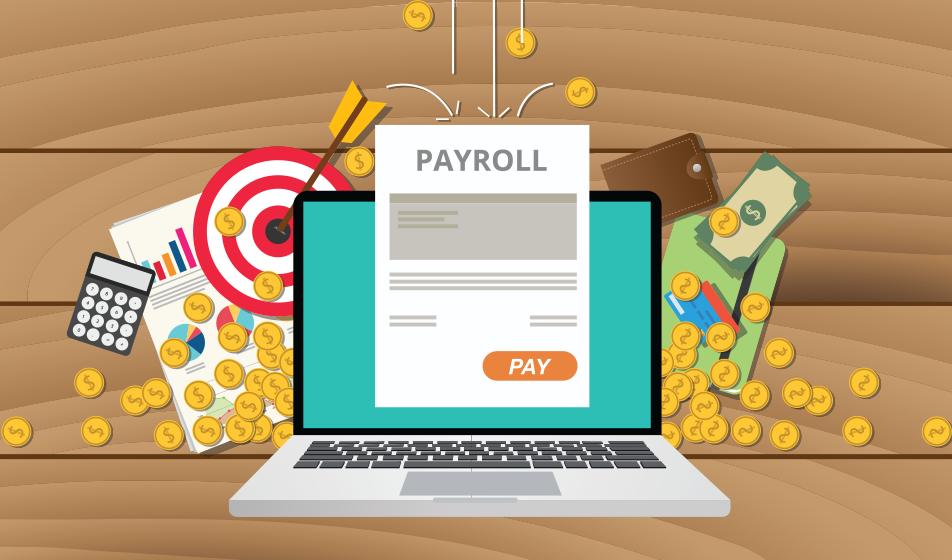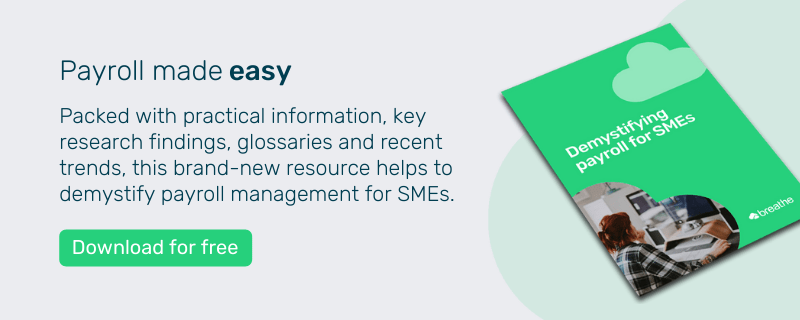Payroll occurs in all organisations where people are employed for paid work. Those that process payroll often have various ways of approaching it. Some people are expected to take on payroll responsibilities as well as other duties within their organisation.
In this blog, we’ll cover what payroll software is and how it works - as well as highlighting the benefits of using payroll software to help your business and streamline your processes.
The payroll process
In this section, we’ll cover the main responsibilities of someone who is running payroll. For more information on what payroll is, read our blog.
Either before your employee’s payday (or on this date) the person responsible for organising payroll will need to:
- Record what employees are being paid (including salary/any pay they’re receiving).
- Work out any deductions from their pay (e.g. tax, National Insurance).
- Calculate the employer’s National Insurance contribution (you’ll need to pay this on any employee’s earnings over £184 a week).
- Create payslips for every employee
- Report their pay (and deductions on their pay) to HMRC in a Full Payment Submission (FPS).
(If you need help with setting up PAYE, we’ve got you covered.)
Company benefits such as private healthcare plans are sometimes taxed differently, as well as any additional benefits like company cars. If you have any employees repaying student loans, these are also calculated and deducted within the payroll process.
You'll also need to comply with HMRC’s compulsory regulations regarding deduction and submissions to them via their Real Time Information (RTI) scheme (introduced in the private sector in 2021).
How does payroll software work?
Payroll software generally takes employee information that has been entered into the system (name, National Insurance information, etc) and uses this data against your company policy information to calculate net pay for employees and perform the payroll process.
Depending on which system you use, this data might already exist within the software (if your HR and payroll systems are integrated) or it may need to be inputted.
Payroll software systems calculate how much each employee will receive in their pay packet each month and create a payslip to show this information. If an employee has been off sick or on holiday, this data is considered in line with your company policy (in terms of payroll).
Any tax or NI contributions are deducted (along with any other taxable deductions like company benefits) with resulting net pay remaining.
Payroll software systems then make payments to employees and create reports relevant for that payroll run/month.
Why is payroll software important?
Streamline processes
Payroll software helps to automate the process of running payroll. As HR and payroll data often crosses over, having access to all this information contained within the same software will save valuable time. Any automation in the process can help to streamline a vital (but often repetitive) business process, reducing the risk of human error.
Payroll software can usually generate a wide range of payroll reports – saving you time sifting through data to create them, payroll reports can be created in just a few clicks within most software systems. Some payroll systems are also integrated with accounting software, providing those responsible for financial management within a company with visibility of all payments and submissions and the impact these have on cashflow. This is important as salaries are one of the largest overheads.
Payroll software is also required to submit tax and NI deduction information to HMRC as part of their RTI scheme. RTI made it compulsory for employers to report their payroll calculations throughout the year, following the completion of each payroll run. For many businesses this means using payroll software to submit information to HMRC monthly.
Security
Using payroll software helps to keep your data secure - and available only those that need access to it. Rather than worrying about printed copies of timesheets going missing (or the keys to the filing cabinet being misplaced) you can rest assured knowing your sensitive payroll information is safe and secure.
These days, increasing numbers of businesses are opting for cloud-based payroll software which is hosted on their behalf by their software provider. From a security perspective, the main benefit is that professionally managed data-centres (and a company’s data) are ring-fenced by powerful security systems which create safer environments than a business’ own premises.
Look for cloud software which is hosted in ISO 27001-accredited datacentres. This accreditation demonstrated that a data-centre has been independently certified at for security at the very highest level.
Access from anywhere
Cloud-based software means you can log into your HR and/or payroll software portals wherever you are, allowing on-the-go access to your information. Cloud payroll software is usually hosted by a third party (an expert in their field), meaning you just need to use one system to access all the information you need.
The alternative to cloud-based payroll is on-premises payroll software. Having on-premises payroll software means that a company pays for a license for (or a copy of) the system. This is then stored behind the organisations’ own firewall and on company servers. This means that the company will need to pay for the upkeep and IT costs of maintaining the software. With cloud-based payroll software, the third-party company is required maintain the costs of running the technology.
With more and more people working from home post-pandemic, being able to access HR information and access payroll data from anywhere has never been more important.
Simplify your payroll process
If you're running payroll manually, it could be time to investigate software options which will ultimately save you time and effort.
Cloud-based payroll and HR systems allow businesses to be operationally agile and keep data secure and private – challenges that many organisations faced in the pandemic.
Using one people-management software that allows you to keep all your data in one place reduces time, costs, and effort. Find out how Breathe can help your business today.

Author: Aimée Brougham-Chandler
An IDM-certified Digital Copywriter (2023) & English Language & Literature graduate (BA Hons), Aimée is Breathe's Content Assistant. With 3 years' content marketing experience, Aimée has a passion for writing - and providing SME HR teams with solutions to their problems. She enjoys delving into & demystifying all things HR: from employee performance to health and wellbeing, leave to company culture & much more.





